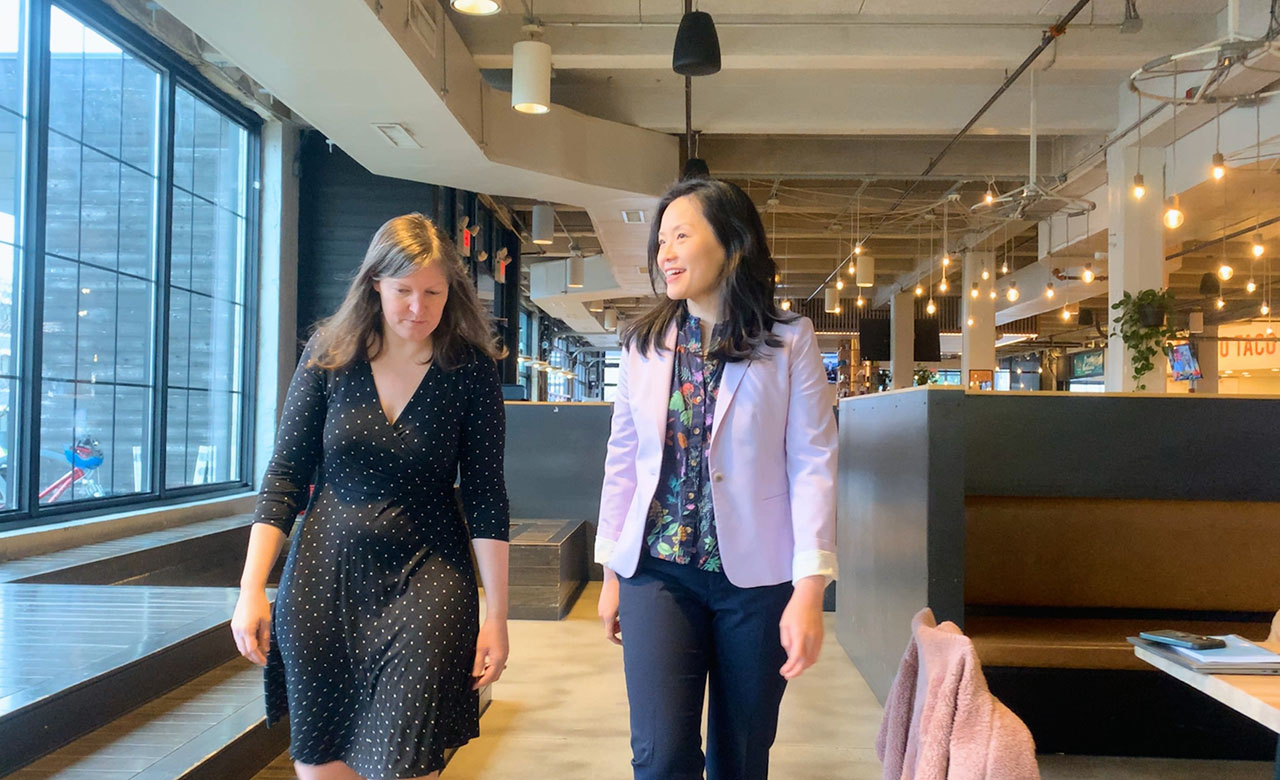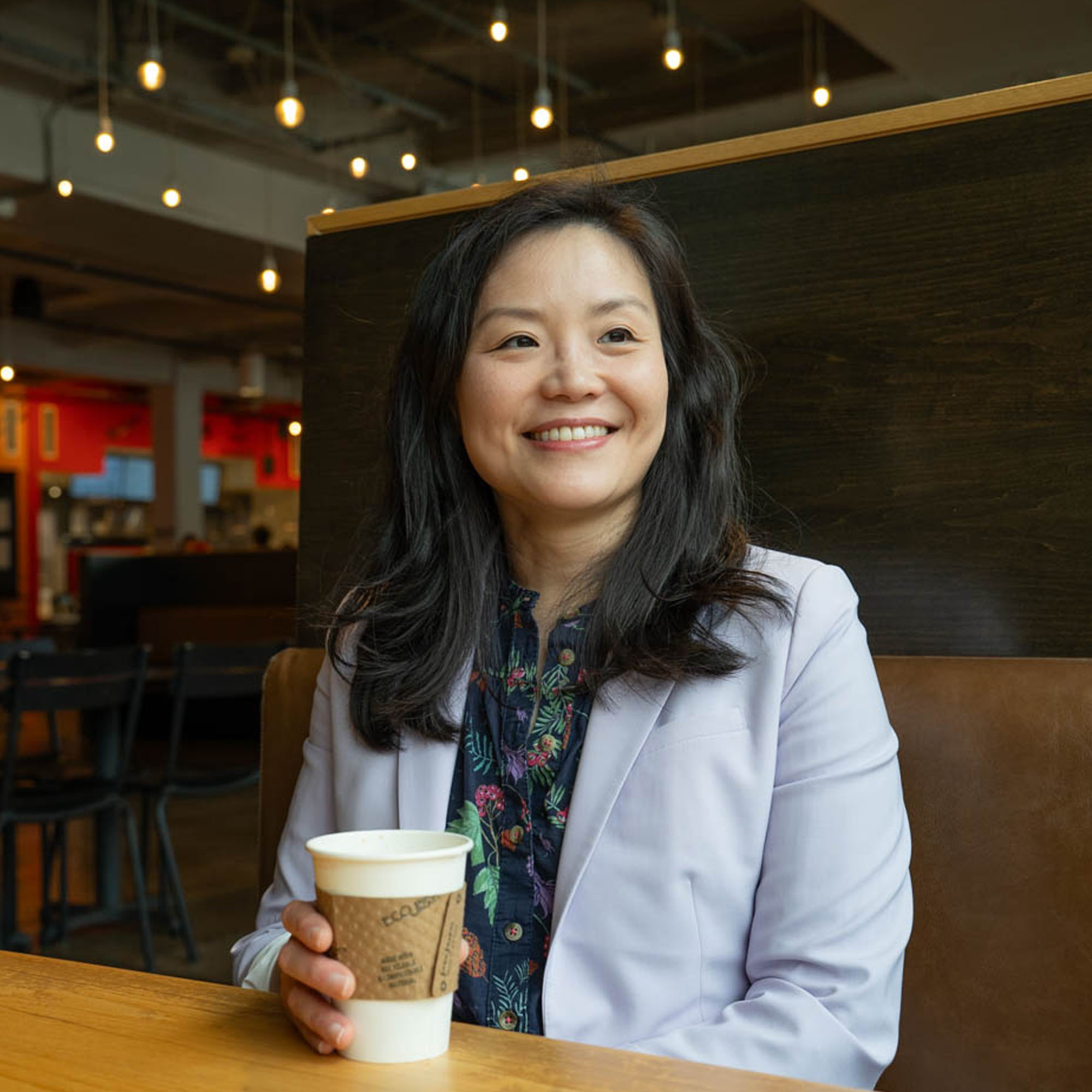We met Dr. Yunzi “Rae” Tan at R. House, a public market just over 1 mile from campus, to learn about her research, courses and work between sips from her latte.
Tan, an associate professor and program director of the M.S. in Negotiations and Conflict Management at The University of Baltimore, is a social and organizational psychologist by training who focuses her research on social categorization processes and triggered displaced aggression in intergroup contexts, effective diversity training evaluation, team conflict management dynamics and processes, and mindful interventions in online group learning. Her teaching interests include organizational conflict and conflict management systems, team conflict management dynamics, workforce diversity, equity, and inclusion interventions, as well as organizational change and development.
Q: What’s something you’ve learned from your experiences in teaching students about conflict management?
A: One of the things that I’ve come to realize is that we still have much to learn, especially in the conflict scholarship and research domain. A lot of the knowledge that has been produced and valued in this domain is still rooted in the dominant or privileged group’s perspectives and worldviews.
So, being trained at an institution that consists of students and faculty who arguably belong to more privileged groups in our society, and then coming to an institution to teach students who really don’t share that background and those experiences to use those strategies and knowledge in their own lives, that has proved to be difficult or challenging. Between the lived experiences of our students and what we think we know in negotiation and conflict management research lies a big gap. So much work needs to be done to add the perspectives of groups and communities that have traditionally been underserved, underrepresented, or marginalized.


Q: Part of your work has included consulting with organizations of various sizes. When it comes to workplace microaggressions, organizational and team conflict management systems, and workplaces diversity, equity, and inclusion (DEI) interventions, what are some common mistakes you’re seeing and how can companies and organizations do better for their employees?
A: One common thing that I often see with organizations that I work with is the overreliance of linear short-term thinking and not enough big-picture or systemic thinking to help them understand organizational challenges, whether these have to do with DEI, change management issues, or organizational conflict. Time is money, especially in corporate America, and also in the public sector, especially when you have constant turnover of administration or leadership. The lack of consistency in leadership can often create this mindset of, oh, this too shall pass, or we just have to wait it out until we get new leaders and then we don’t have to deal with this initiative or intervention. It’s a constant challenge I have to push against when I consult to organizations. You need to apply a systemic view and perspective of analyzing and assessing the issues rather than just looking at and treating the symptoms.
Q: As director of the Urban Conflict Manager Program, you’ve discussed the value of shared learning of uncommon knowledge and life experiences. Tell us about the Urban Conflict Manager program and what it can teach us about using our uncommon knowledge to build better bridges within our communities and develop engagement opportunities.
A: The program was designed to be a professional development certificate program that is co-sponsored by our Schaefer Center for Public Policy, and the Baltimore Mayor’s Office for Neighborhood Safety and Engagement (MONSE). It really started with a couple of conversations initiated by the leadership of both institutions, part of which also stemmed from the Community Violence Intervention Plan that Mayor Brandon Scott had rolled out a couple years ago.
One of the proposed initiatives in that plan was to provide professional development training and opportunities for the violence interrupters and folks who are actively working in the community violence intervention efforts around the city and the surrounding areas. When we at UBalt were first brought into the conversations, it quickly became clear that there was a natural fit here because we pride ourselves as the University of Baltimore, for Baltimore, and that we also have a well-established negotiation and conflict management program. So, when we were first approached by MONSE to develop a training program, it was a no-brainer because we have the expertise, and it aligns well with our mission in serving our community and serving the people of Baltimore.
We then had the opportunity to talk to the Safe Streets Baltimore staff and the violence interrupters to get their sense of what they would want and need from the program. That was instrumental to the design and deployment of the program because we believe that this is a two-way street, where we are building a mutual learning community, where we are here to learn from them as much as they’re here to learn from us.
The violence interrupters and Safe Streets folks have very unique backgrounds and perspectives, and so it was important that we design a program that would help them integrate what they already know through their life experiences with what we know in the field of conflict management and resolution. I believe this is how this program will be most useful and most impactful in the work that they do, and in helping them grow and develop professionally.

What Charms Us
"I will say two things. One, the resilience, authenticity and warmth of the people in Baltimore. And number two, the food scene. I think that the Baltimore food scene is underrated. There’s so much, food wise, that people in the city and the surrounding areas have to offer and we should give more recognition to that."

